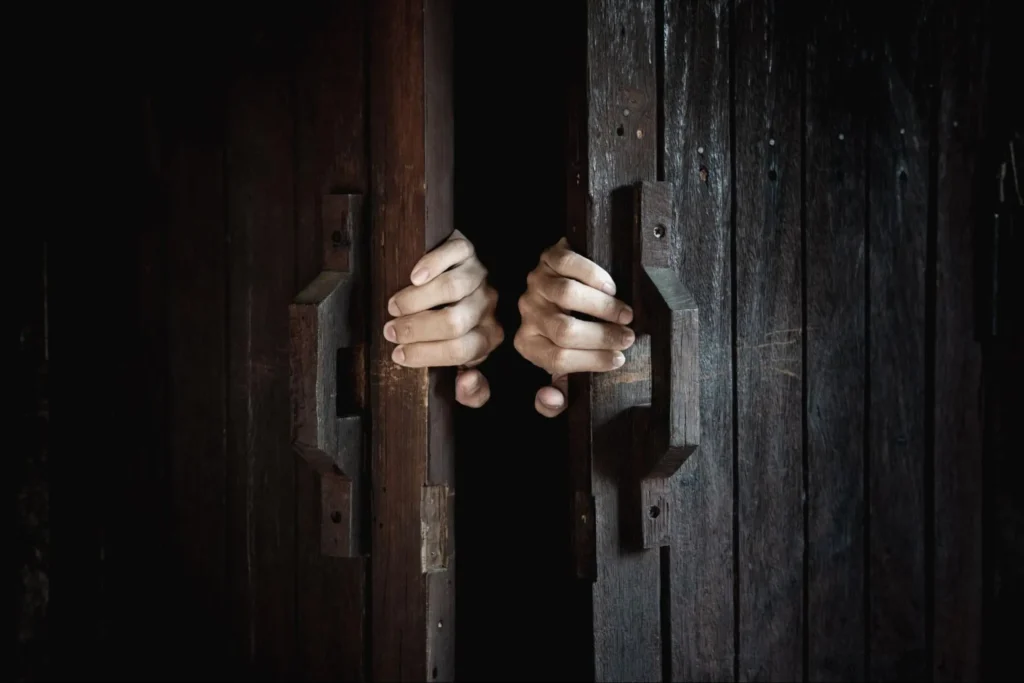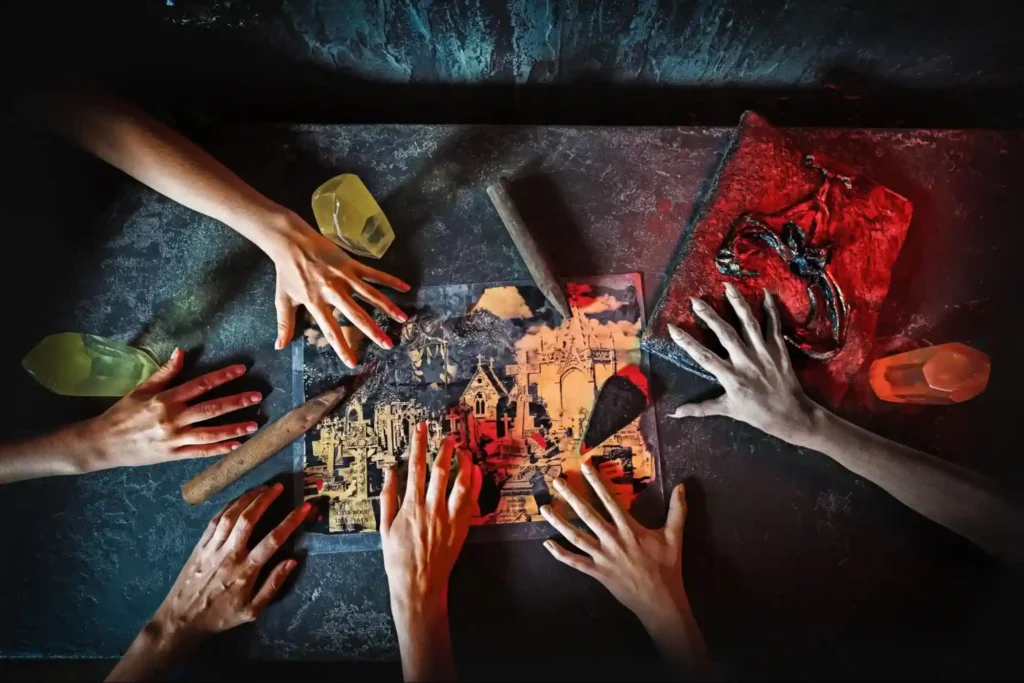Fifteen years ago, if you said the phrase ‘escape room’ to someone, they’d probably think you’d forgotten the word for ‘prison’. Now, escape rooms are a well-established form of entertainment and a popular team-building exercise around the world. From birthday parties to corporate bonding events, they provide a fun, safe opportunity to experience the thrill and satisfaction of escaping from somewhere by delving into the hidden chambers of your problem-solving skills.
Perhaps you’ve attended your fair share of escape rooms, and fancy yourself as the next escape room designer. Or, maybe you’re looking for your next business venture, and the previous two decades of escape room success is a tantalising avenue you’re interested in wandering down.
In this blog, we’re giving you the ultimate guide on how to design an escape room. Ultimately, thoughtful design is an essential component of crafting a memorable and captivating escape room experience, and as the designers of Australia’s very first escape room, we know a thing or two about how to do it well.
Keep reading as we share our tips on how to design an escape room.
Table of Contents
- 1. Narrative: Conceptualise Your Escape Room
- 2. Design: Build The Challenge
- 3. Layout: Map Out Spatial Design & Flow
- 4. Experience: Add Details & Finishing Touches
- 5. Conclusion: How To Design An Escape Room

1. Narrative: Conceptualise Your Escape Room
When you strip out all the bells and whistles, most escape rooms are just…empty rooms. Rarely will players find themselves physically trapped, locked or held in a location. What turns an escape room from a collection of puzzles into a thrilling, immersive experience is the narrative.
If you can come up with a compelling story – an initiative to get out, a danger to escape from, or some other kind of thrill to amp up the adrenalin, your escape room will transform into a multi-dimensional, all-senses-engaged game for its players.
Choose A Theme & Setting
You’re bound only by the limits of imagination, so check out some common escape room game environments and themes, and try to come up with a novel angle to offer your players something different. A jungle safari? An undiscovered tomb? An underground bank vault? You can also consider historical time periods for a fully transportive effect, like our WWII-inspired escape room, ‘Fractured’.
Develop A Plotline
Your story doesn’t need to have endless plot twists and character dynamics, but you should spend ample time considering the plot behind the puzzles. When your players understand what they’re trying to accomplish beyond a simple code or number, there’ll be greater motivation, excitement and satisfaction to solve it.

2. Design: Build The Challenge
Next on your checklist for learning how to design an escape room is the bread and butter – constructing the actual puzzles!
Puzzle Variety
Our brains work in different ways. And whilst you don’t want to design every puzzle so that everyone can solve it, you should incorporate a mixture of challenges for each kind of thinker. Linguistic, logical, analytical, numerical, dexterity and visual are all types of escape room puzzles you should seek to include in your game. Challenges of strength or force are the only ones you should avoid – since this can lead to accidents and items breaking!
Difficulty Levels
It’s important to cater to your entire audience – if you’re allowing teenagers or children to play your game, you must make sure the difficulty level is appropriate, and not more frustrating than fun. However, your codes and answers shouldn’t be easy to solve either! Don’t forget to include challenges that can only be solved by multiple people working simultaneously. After all, escape rooms are a great team-building activity – but only if there are genuine opportunities to work together!
3. Layout: Map Out Spatial Design & Flow
What makes an escape room game unique is that it goes beyond the confines of any board or card deck. It surrounds its players, which means an equally important part of knowing how to design an escape room well comes from paying close attention to the game flow, and how players move around the physical space.
Consider Game Flow
Create a chart where you can visualise the physical space from a bird’s eye perspective. Map out how your players will progress through the room (and into any hidden tunnels, chambers or other secret rooms once they’ve gained access). Can your game be played in more than one way, or is there a sequential order that must be followed to progress along it? Don’t overcomplicate the story, but provide a logical, seamless flow that immediately hooks players and provides them with genuine conflicts to overcome and sensical pathways to follow.
Maximising Physical Space
The best way to maximise player interaction and enjoyment is to run a few test games and observe puzzle dynamics, so you can tweak elements during the design process. Are players spending too long on one challenge? Is most action concentrated in one corner of the room? Some level of physical engagement with the room and props can provide extra immersion, but you will need to ensure that your gameplay can accommodate a range of accessibility needs, as well as ensuring safety, such as avoiding the risk of bumped heads or tripping hazards!

4. Experience: Add Details & Finishing Touches
Once the foundation of your escape room game is complete, it’s time to transform it into a holistic environment. As soon as your players step into the room, you want them to feel prepared for an adventure.
Props & Decorations
With some simple props, clever lighting and sound effects, you can take your players anywhere in the world, or even into space. Consider the setting of your escape room, and choose thematic props to build up a more immersive experience. Decoration doesn’t need to cost a fortune either. Escape rooms commonly feature low lighting, which provides you with the privilege of being able to use shadows to your advantage. It’s all about setting the mood – your players can fill in the gaps with their imagination.
Tech & Special Effects
As technology advances, players (especially younger demographics) are expecting to see greater integration in forms of entertainment. You could even create a complete virtual reality escape room if you’re inspired by these rapid developments in VR gaming. But, if you’re sticking with the ‘traditional’ physical format, a few elements such as infrared tools, animated projections and a mix of high-tech and low-budget additions will add greater depth to your game without disrupting the experience.
5. Conclusion: How To Design An Escape Room
In this blog, we’ve covered how to design an escape room, and the four key elements you need to consider when plotting out your game:
- Narrative
- Design
- Layout
- Experience
From constructing a storyline that envelops the actual challenges your players need to solve to mapping out the physical experience of the game and incorporating considered decorations to bring it to life, designing an escape room is all about blending imagination with logic to conjure up a new dimension, contained within four walls.
Finally, remember that your escape room should change with trends and expectations. Leave options for players to share their thoughts afterwards, which will help you continuously improve the gaming experience and make adjustments where necessary.
If you’re looking for extra inspiration or just want to see how the professionals do it – head over to one of our own escape rooms and try your hand at beating the clock. Whether you’re a first-timer looking for beginner escape rooms or feel confident you’d be able to tackle the hardest escape rooms in the world, we have four games catered to each level of experience.
Contact our team today for more information, or head straight to our easy online booking system to grab your slot.


